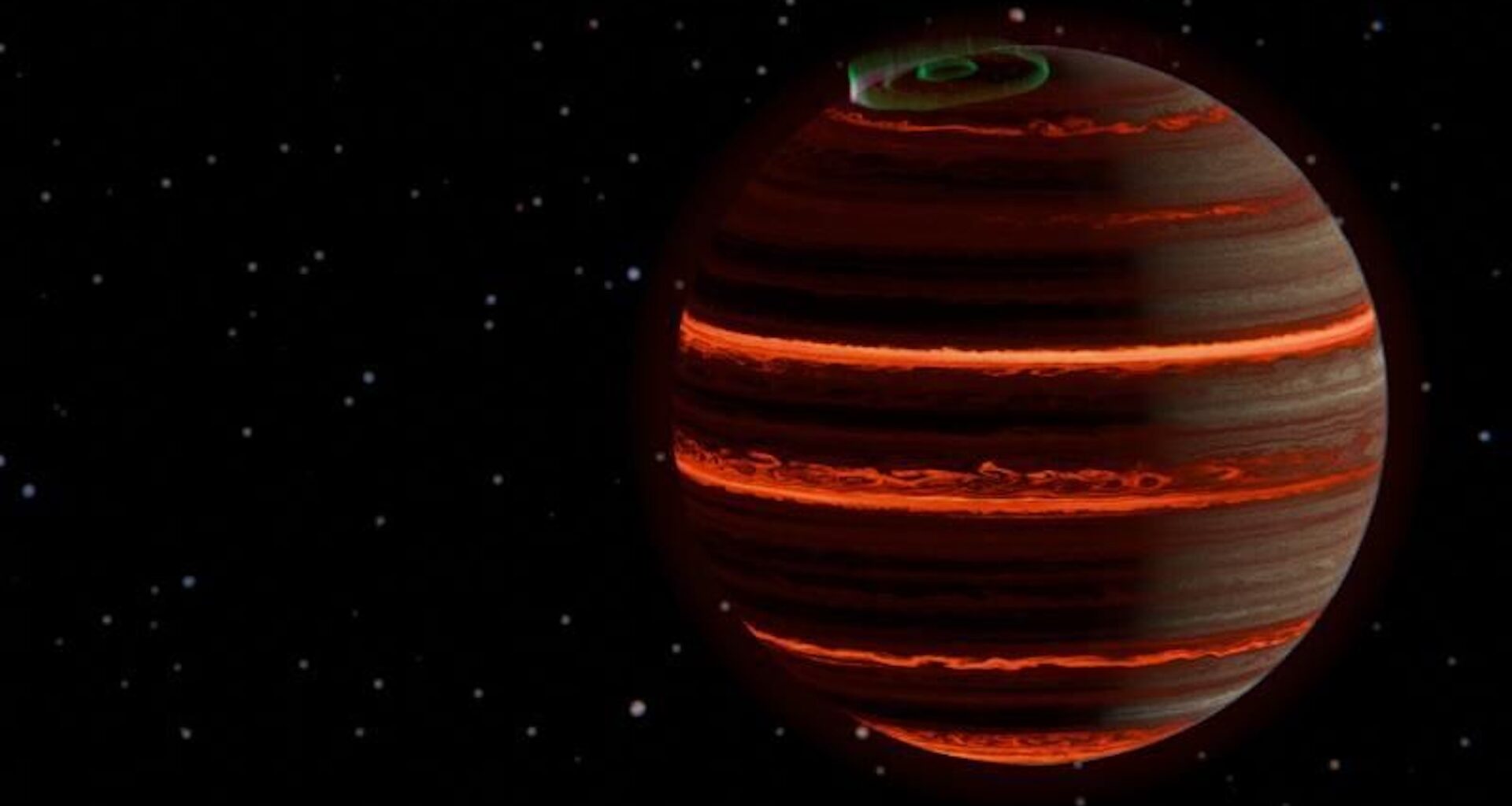New James Webb Space Telescope observations have shed light on a distant world with no sun. Despite its nocturnal state, the alien sphere still glows with auroras brighter than the Earth’s northern lights.
The alien world, called SIMP-0136, is roughly 20 light-years away in the Pisces constellation. It is approximately 200 million years old and isn’t technically a planet. SIMP-0136 is a brown dwarf, a celestial body that blurs the line between gas giant planets and stars.
Analyzing a ‘failed star’
Astronomers don’t fully understand how brown dwarfs are formed. The objects, sometimes referred to as “failed stars”, might form similarly to planets, due to the accretion of material in a protoplanetary disk. They could also form like a star, thanks to the contraction of gas.
We do know that brown dwarfs never grow large enough to sustain a nuclear fusion reaction in their core. This means they cannot be classified as a star. However, they do host planets and emit measurable light, like a star. On the other hand, they also have auroras and atmospheres with storms, like planets.
The brown dwarf SIMP-0136 is even more unusual because it is a rogue world. This means it is floating freely through space, untethered from any star system.
A team of scientists pored over data collected by the James Webb Space Telescope to understand the alien world better. They detailed their findings in a new paper published in the journal Astronomy & Astrophysics.
The team tracked changes in SIMP-0136’s atmosphere as it performed a full rotation. The result is a “weather report” that provides new insight into the rogue world.
“These are some of the most precise measurements of the atmosphere of any extra-solar object to date, and the first time that changes in the atmospheric properties have been directly measured,” study lead author Evert Nasedkin of Trinity College Dublin explained in a press statement.
How a sunless world develops auroras
The study reveals shifts in temperature, cloud cover, and changes in chemistry as SIMP-0136 rotated.
“Understanding these weather processes will be crucial as we continue to discover and characterise exoworlds in the future,” explained study co-author Johanna Vos.
During the study, the team analyzed a layer of air roughly 570 degrees Fahrenheit (300 degrees Celsius) warmer than their models had predicted. Auroras most likely cause this extra heat.
On Earth, auroras are caused by the solar wind interacting with our planet’s magnetic field. The scientists behind the study believe that SIMP-0136’s auroras rely on charged particles flying through interstellar space instead of a host star.
SIMP-0136 has a much stronger magnetic field than that of Earth. This accentuates the interaction with these charged particles, leading to intense auroras. The charged particles interact so strongly with the brown dwarf’s magnetic fields that they heat the world’s upper atmosphere.
Due to their strange hybrid planet-star nature, brown dwarfs are the coldest known star category in the cosmos. Even so, the researchers recorded SIMP-0136’s temperature at a sweltering 2732 degrees Fahrenheit (1,500 degrees Celsius).
Rogue worlds like SIMP-0136 provide astronomers with a unique opportunity to study celestial bodies without the interference of stellar radiation from host stars. This allows for detailed studies of the world’s atmosphere and temperature. As with SIMP-0136, these studies can provide compelling insight into the weather and behavior of distant alien worlds.

